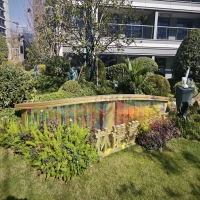Welcome to the website for landscape facilities products and knowledge.
How does the bin’s design ensure it remains easy to identify in low-light conditions?
In urban environments, maintaining efficient waste management relies heavily on the visibility of bins, especially during nighttime or low-light conditions. Modern bin designs incorporate several key features to address this challenge.
1. Reflective Materials: Many bins are equipped with reflective strips or coatings that catch and amplify ambient light, such as streetlights or car headlights. This makes them instantly recognizable even in dim settings.
2. High-Contrast Colors: Bins often use bold, contrasting colors (e.g., bright yellow lids on dark green bodies) to stand out against their surroundings. This color differentiation is scientifically proven to enhance visual detection.
3. Strategic Placement: Bins are frequently positioned near light sources or high-traffic areas to maximize natural visibility. Some designs also include built-in LED lights or solar-powered markers for added illumination.
4. Standardized Shapes and Symbols: Consistent shapes and universally recognized recycling symbols help users identify bins quickly, reducing reliance on text or fine details that may be hard to see in the dark.
By combining these elements, bin designers ensure that waste containers remain functional and user-friendly around the clock, promoting cleaner cities and better recycling habits.
Related search:

Recommendation
Metal and acrylic color-changing combined curtain wall for large-scale public landscape facilities